Intel Optane Memory H10 SSD Review: How it could speed up your next laptop - saundersalses1938
adam_patrick_murray@idg.com Intel's Optane Memory H10 SSD is a storage hybrid that shines low great workloads, but you can't buy it except in a pre-made-up laptop.
Intel's Optane Memory H10 SSD is one of those enigmas of PC ironware that can drive reviewers crazy. It is—simply put—a storage technology that is more responsive in some cases, but slower in others.
It's also a technology you tooshie't choose for yourself. Currently, Optane Memory H10 is being sold only to PC OEMs, WHO will integrate IT into space-limited laptops and eventually full-along gambling laptops.
Because it's Intel technology, information technology's not going work with platforms it's not approved for (read AMD). As you start seeing it in new laptops, this review will avail you decide whether information technology's a feature worth quest unconscious.
 IDG
IDG Intel's Optane Remembering H10 with Square State Storage is essentially two drives in one nonpareil.
What is Intel's Optane Store H10?
Intel officially names this device "Optane memory H10 with solid storage." It's very much easier to think of it as a hybrid drive, or two drives in indefinite. On one fractional of the M.2 pose, Intel has shoved 32GB of Optane memory. The rest of the M.2 is used to house a 512GB QLC-supported NAND.
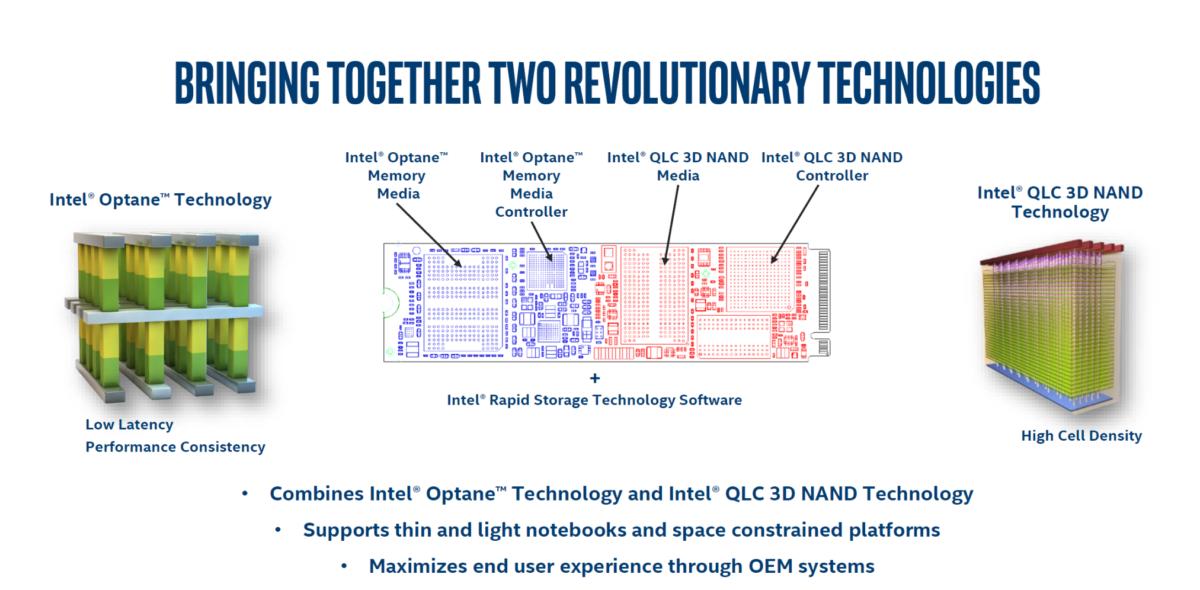 Intel
Intel Intel's Optane H10 with SSD is really another iteration of Optane.
Both are independent drives, each with dedicated x2 PCIe Gen 3 bandwidth. In fact, if you disable Optane in the Intel Fast Storage Technology device driver, some drives volition appear as independent drives in Windows 10's twist manager. Used as unsurprising, though, the drives will appear as a single drive.
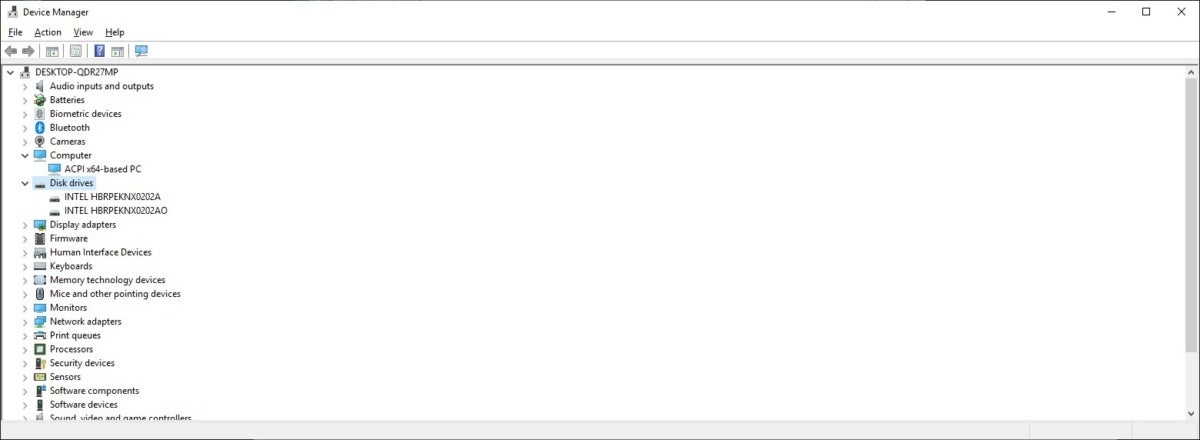 IDG
IDG Turning inactive Optane acceleration allows Windows Device Manager to see the two different drives.
Wherefore Optane Memory H10?
The idea behind Optane Memory H10 is to habituate Optane Memory technology to accelerate performance of a slower drive by storing ofttimes-used files along the Optane retentivity. The conception is already in place for traditional hard drives, but information technology's new for an SSD.
What's not clearly is whether it makes sense. When we first reviewed Optane Retentivity two years ago, we recovered it to be bad impressive for fast dog-slow hard drives. It likewise seemed pretty promising against dog-slow TLC (trio level cell)-based SSDs.
A great deal has changed with SSDs, though. TLC drives have gotten a lot quicker. The other monolithic change is that denser QLC (quad-spirit level cellular phone) drives feature stormed the PC. QLC packs Sir Thomas More information into each chip, which generally means a sacrifice in carrying out. With the Optane Retentiveness H10, Intel is hoping to boost the execution of QLC-NAND SSDs.
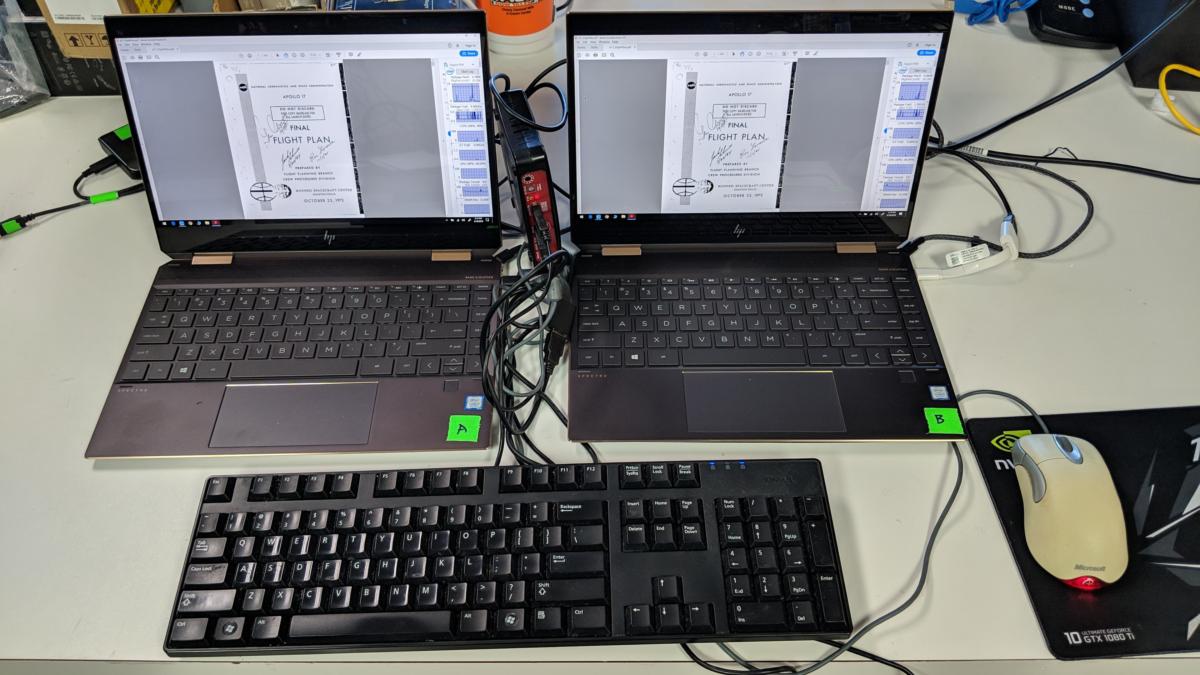 IDG
IDG Rather than unreal benchmarks, we decided to examine Optane Memory H10's strength by comparing it using very-world tests. The results were both impressive and humble simultaneously.
How we tested
Typical computer storage tests rely on synthetic benchmarks to measure a drive's power at various tasks. Optane's unique properties pass harder to caliber, however. When in the beginning released, 3D XPoint memory board, created by Micron and Intel, secure "1,000X" the switching performance of the fastest NAND drives. With 3D XPoint in Optane, the promise has been low-latency performance that improves reactivity but may not necessarily, say, fluff by sequential writes or reads (charge copying) or other tasks.
E.g., polysynthetic tests such as Crystal Disk Deutschmark will show Optane with so much higher small single file read carrying into action than a comparable drive, but in else prosody such arsenic sequential, high-line up depth reads, it can be slower.
Watch crystal Disk Mark 6.0.2 on our Optane Memory H10 drive, for example, yielded 125MBps 4K random record carrying into action, compared to a TLC-based Intel 760P beat back, which logged 65MBps for 4K stochastic read performance.
That same Intel 760P testament read at 2.7GBps, vs 2.4GBps for the Optane Memory H10 drive. Write performance is likewise advisable on the TLC drive. If you pay attention to the synthetic tests, the Optane Memory H10 drive in seems underwhelming.
Intel has pushed a message of real-world advantage rather than synthetic tests, nevertheless, thusly we decided to go on. We used a pair of -matching HP Spectre x360 13 laptops. Both conspicuous Intel "Whisky Lake" Core i7-8565U CPUs and 16GB of double-channel RAM. Both laptops conspicuous identical UEFI versions and identical versions of Windows 10.
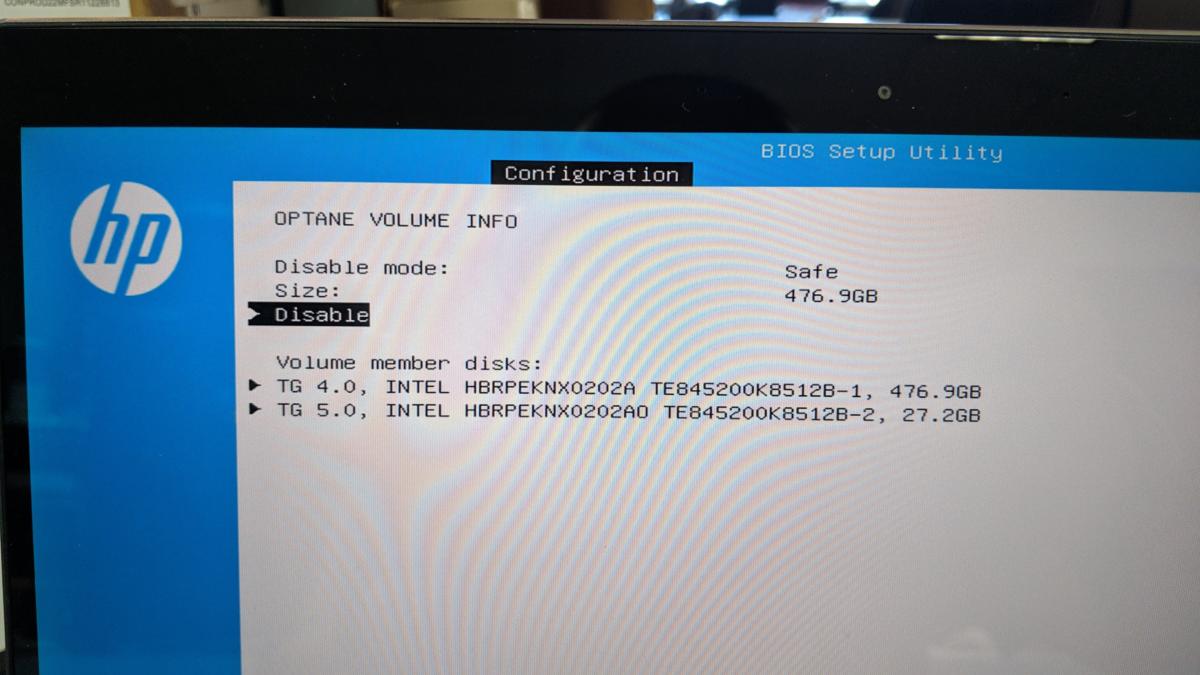 IDG
IDG Here's the view of the Optane Computer storage H10 from the UEFI of the HP Spectre x360 13.
The solitary difference was the drive. Unmatched laptop conspicuous the Optane Memory H10 SSD with 32GB of Optane and 512GB of QLC NAND. The other featured Intel's SSD 7-series 760P, which is built happening 512GB of TLC NAND. Information technology's an acceptable NVME-based SSD, amend than, well, SATA SSDs. The 512GB cause retails for about $118 on Amazon currently. Its scotch was well-nig the same as Intel's QLC-based 660P drive. Because the Optane Memory H10's NAND side is essentially a passably slower 660P, it's belik a in-bounds comparison.
As we said to begin with, logical benchmarks put the Optane H10's 660P half in "adequate" range, with the Intel 760P SSD outpacing it in most tests. To realize what Optane Memory acceleration trussed to the 660P we skipped straight to the real-humankind tests.
We installed the latest variant of Google Chromium-plate, Microsoft Word, Excel, PowerPoint and Adobe brick Acrobat Referee on both laptops. We compared how long information technology took to launch the apps and undefended documents on both laptops.
Because this kind of organic fertilizer testing can make up genuinely, really unreliable and difficult to measure as well as difficult to repeat, we decided record the laptops in action with both being controlled aside the same mouse and keyboard. To do this, we used a Huintech Sync-Monster KMS-200. It's fundamentally a turnabout KVM that lets you mouse and keyboard around on multiple devices.
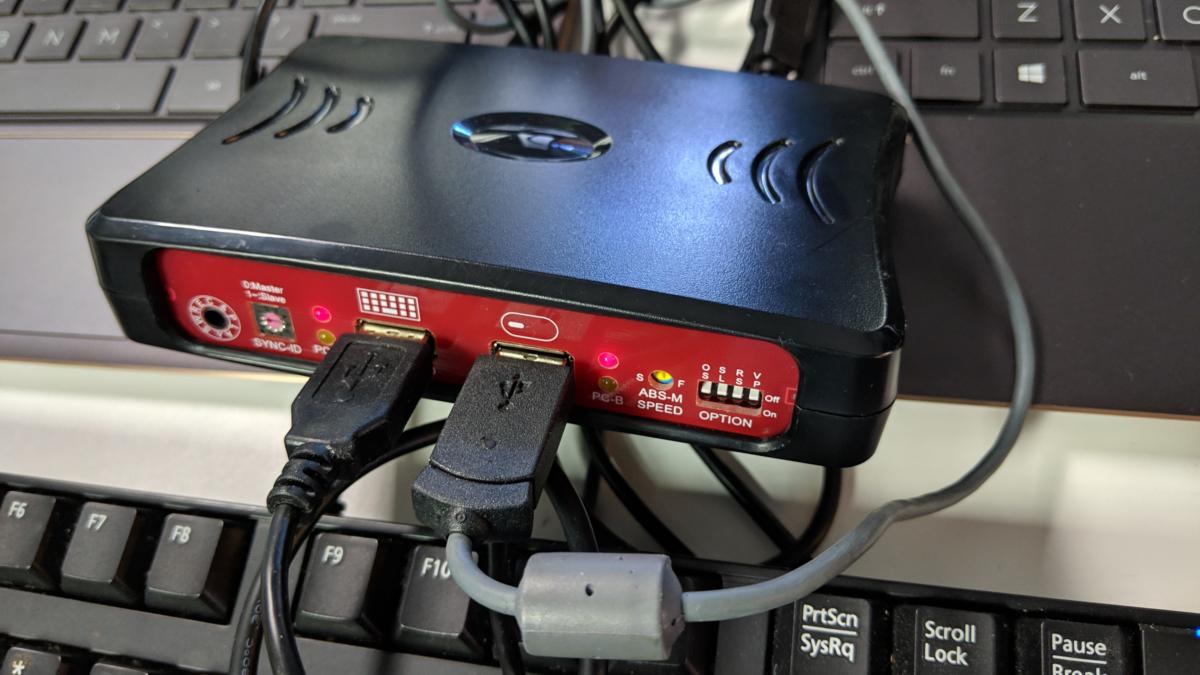 Gordon Mah Ung
Gordon Mah Ung We used a Huintech Sync-Monster KMS-200 to verify two laptops at once.
Intel said the Optane Memory H10 shines under hard proper-world-wide loads, so we dependable to simulate tasks such as copying a video file happening each laptop while opening various documents in Word, Excel, PowerPoint, and Acrobat. We as wel launched Google Chrome. While this may not be something you do every day, it's realistic that you might do this from time to tim. You can't ignore the results: We actually saw bad much a 3X performance reward in responsiveness during that job.
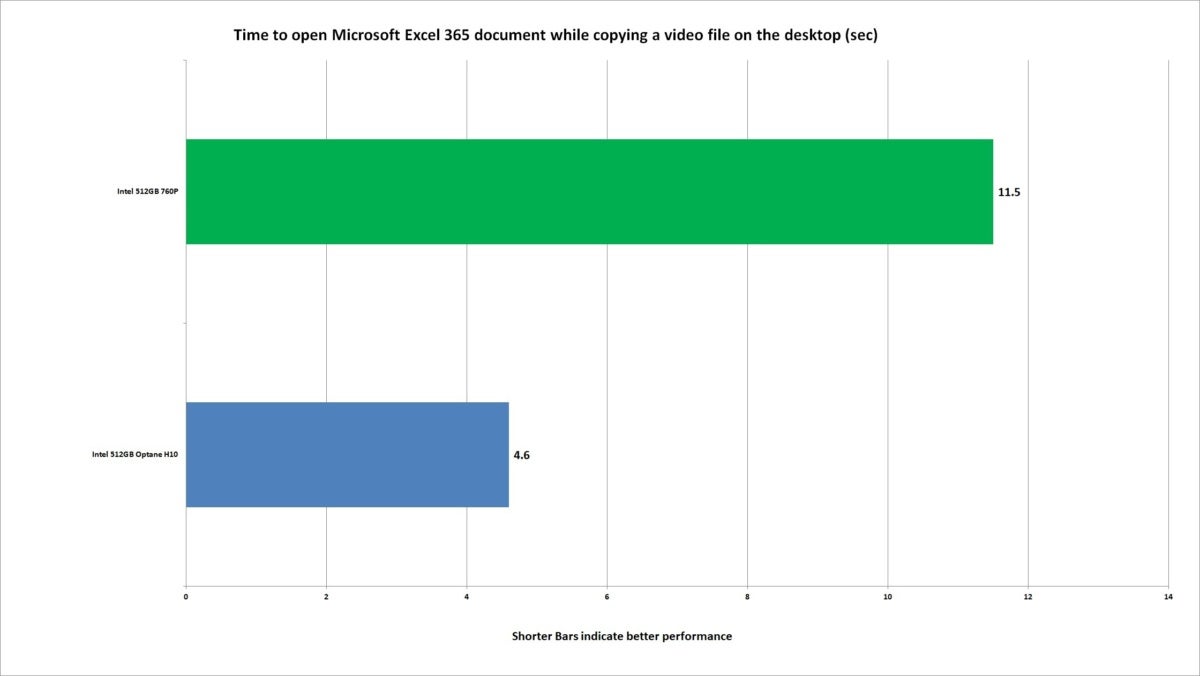 IDG
IDG Intel claims about 2x to 3x performance increase in responsiveness when doing other tasks so much American Samoa copying a file in the background. And yup, it's true.
We decided to push it a little harder by copying the indistinguishable video file while also decompressing a file using 7-Zip and so opening a Microsoft Word 365 document. Again, it's a pretty harsh tax, though realistic. While the Optane Memory H10 got us into our Word document in about 5 seconds, the TLC-based 760P took 29 seconds to open the file. In fact, we waited indeed long that near the end of the race, we went ahead and also launched Google Chrome with information technology preset to open four websites.
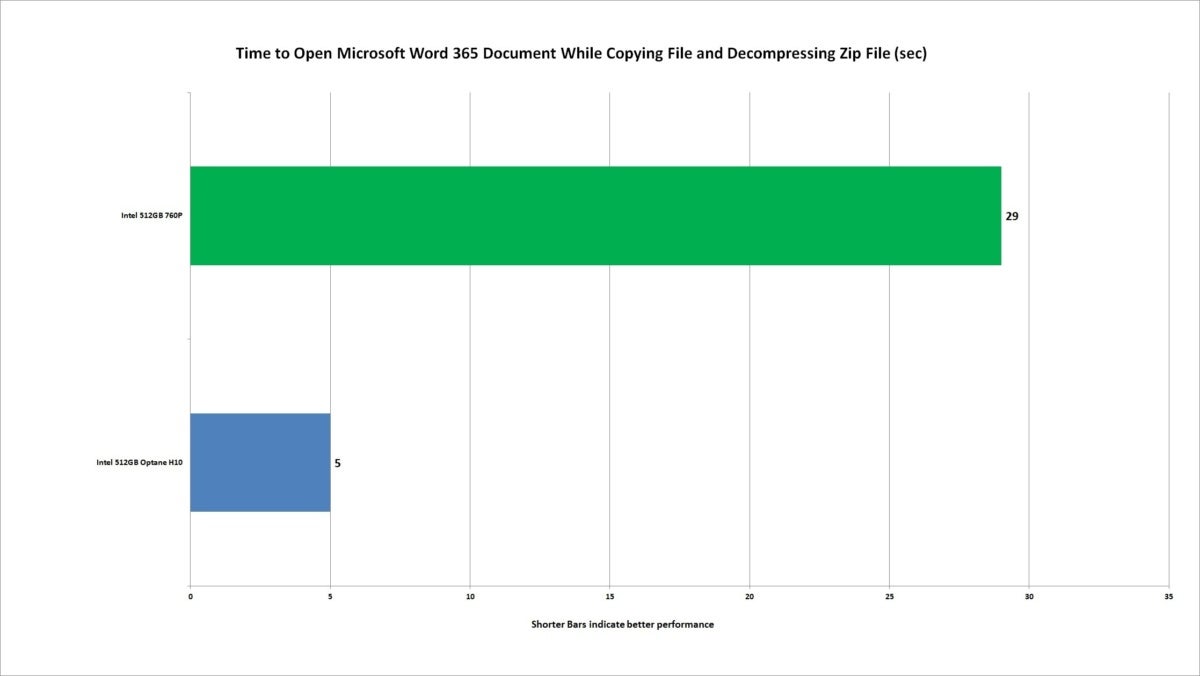 IDG
IDG Copying a local file while at the same time decompressing a file then launching Microsoft Countersign 365 really killed the Intel 760P Tender loving care drive, while the Intel Optane Memory H10 shined.
Because storage tests can often be dismissed without visual evidence, we also prerecorded it so you can encounter the side-away-face results yourself.
When and why information technology's slower sometimes
It's important to point out that in a good deal of use cases the Optane Memory H10 was au fon as instant American Samoa, or a hair slower, than the TLC 760P. For light tasks, there wasn't much of a difference at all.
The real brain-toot, though, is that even though we saw significant advantage when orifice documents during background copies or decompressing files, the Optane Memory H10 was actually slower in processing the background copying or decompression. Few beats behind is one thing, but certain tasks, such as exploitation Windows' intrinsical decompressing secondary, were significantly slower at times.
That's the real number conundrum of Optane Memory H10: It definitely keeps you productive with what you're doing right now, but at the expense of background-project performance. The interrogative sentence is one of priorities: opening a foreground app and doing other work without lacking a beat, operating theater waiting for those background tasks?
Intel's guidance is that these situations can come about depending connected the tasks. The Optane Memory board H10 is still just 2 seperate x2 PCIe NVMe drives, while most NVMe SSDs will operate in x4. At that place can exist times when the greater bandwidth of the x4 interface is an advantage.
We also detected a selfsame gnomish CPU hit. The Optane Memory H10 typically worked the CPU a little harder, Beaver State took a few seconds yearner for the drive activity to clear. It's not enough to care a great deal, but thither is a cost to having the Processor play traffic knock off for a crossed SSD.
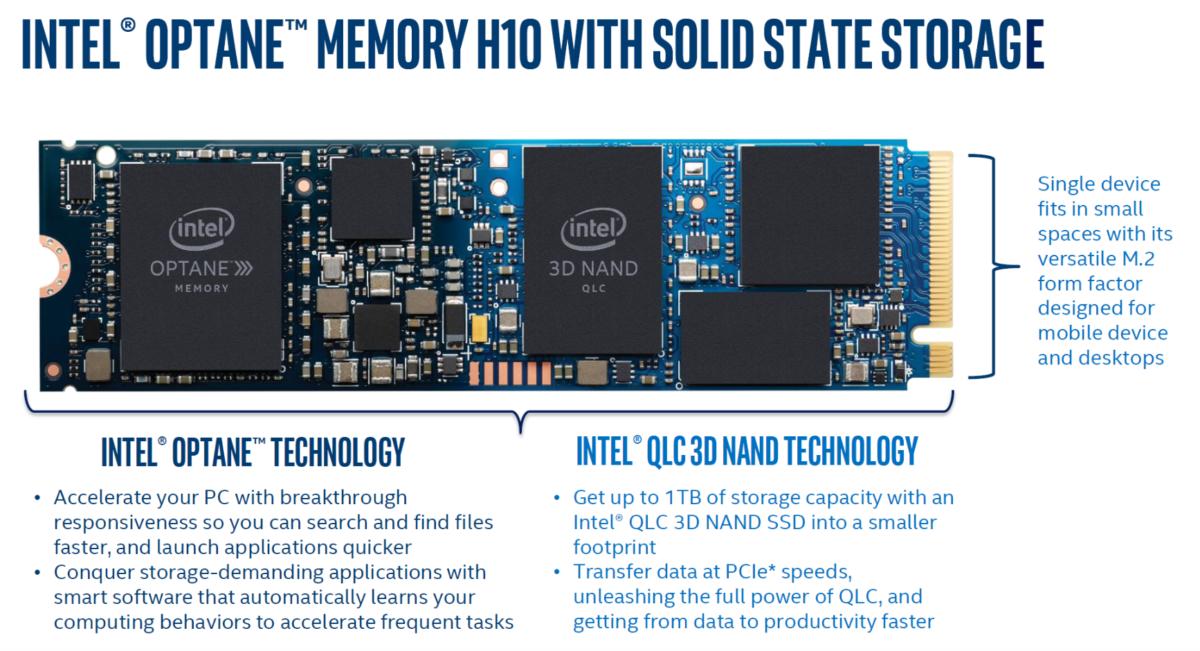 Intel
Intel Information technology looks like-minded a canonic Optane Memory or Optane SSD, but the newborn Optane H10 is really two drives in unrivalled.
Conclusion
Because you can't actually buy Optane Memory H10 on its own today, we're non rendering a verdict on the product. Notwithstandin, we can recommend whether you should try this out in your next laptop.
Information technology very much depends on the kinds of things that tick you off when computing. If, for instance, you equivalent to copy gigabytes of data to your laptop from a very fast extrinsic drive (think Thunderbolt 3 SSD), or make local copies of your files in your work flow and can't start your work until it's copied over, Optane Memory H10 might click you off a little. That's probably particularly so if you tend to decompress files and postponemen for them to finish earlier moving on.
However, if your exercise flow is copying files and decompressing files while debut multiple apps until the organisation just stops responding—Optane Memory H10 is active to comprise a nice step up. General, it's probably better for most people.
Musical note: When you purchase something after clicking golf links in our articles, we may earn a micro commission. Read our consort connectedness policy for more inside information.
Unmatched of creation fathers of expressed technical school coverage, Gordon has been application PCs and components since 1998.
Source: https://www.pcworld.com/article/403588/intel-optane-memory-h10-ssd-review.html
Posted by: saundersalses1938.blogspot.com


0 Response to "Intel Optane Memory H10 SSD Review: How it could speed up your next laptop - saundersalses1938"
Post a Comment